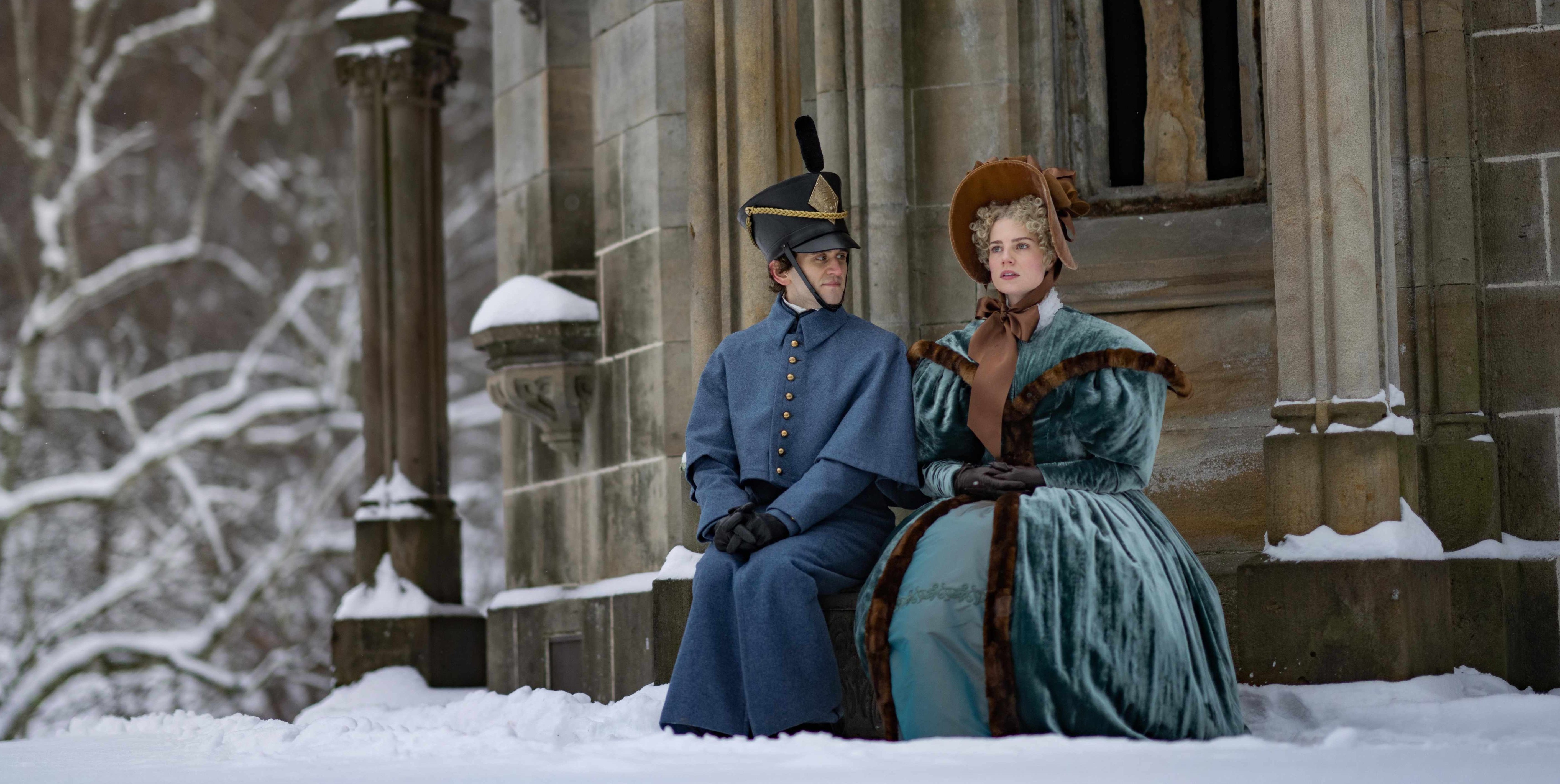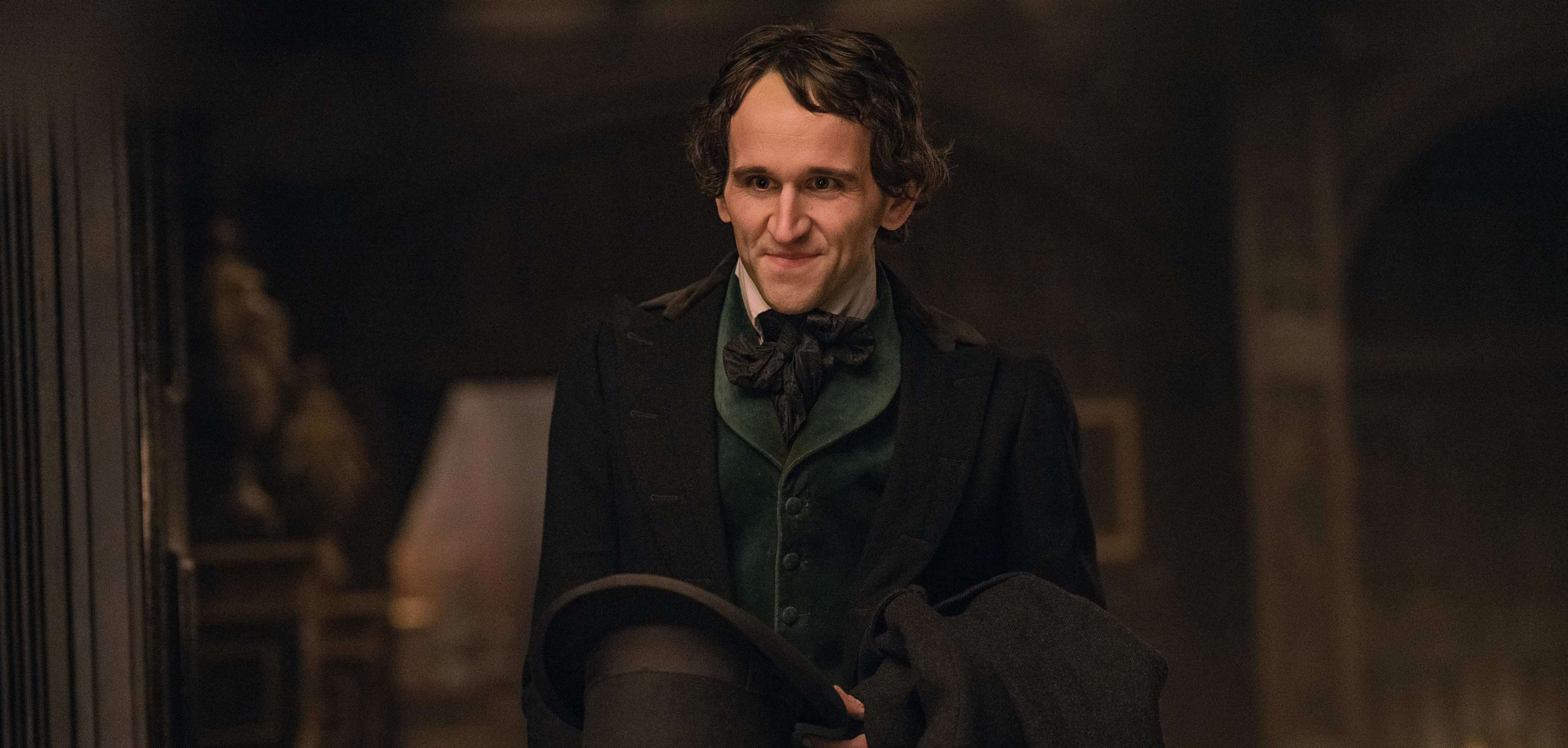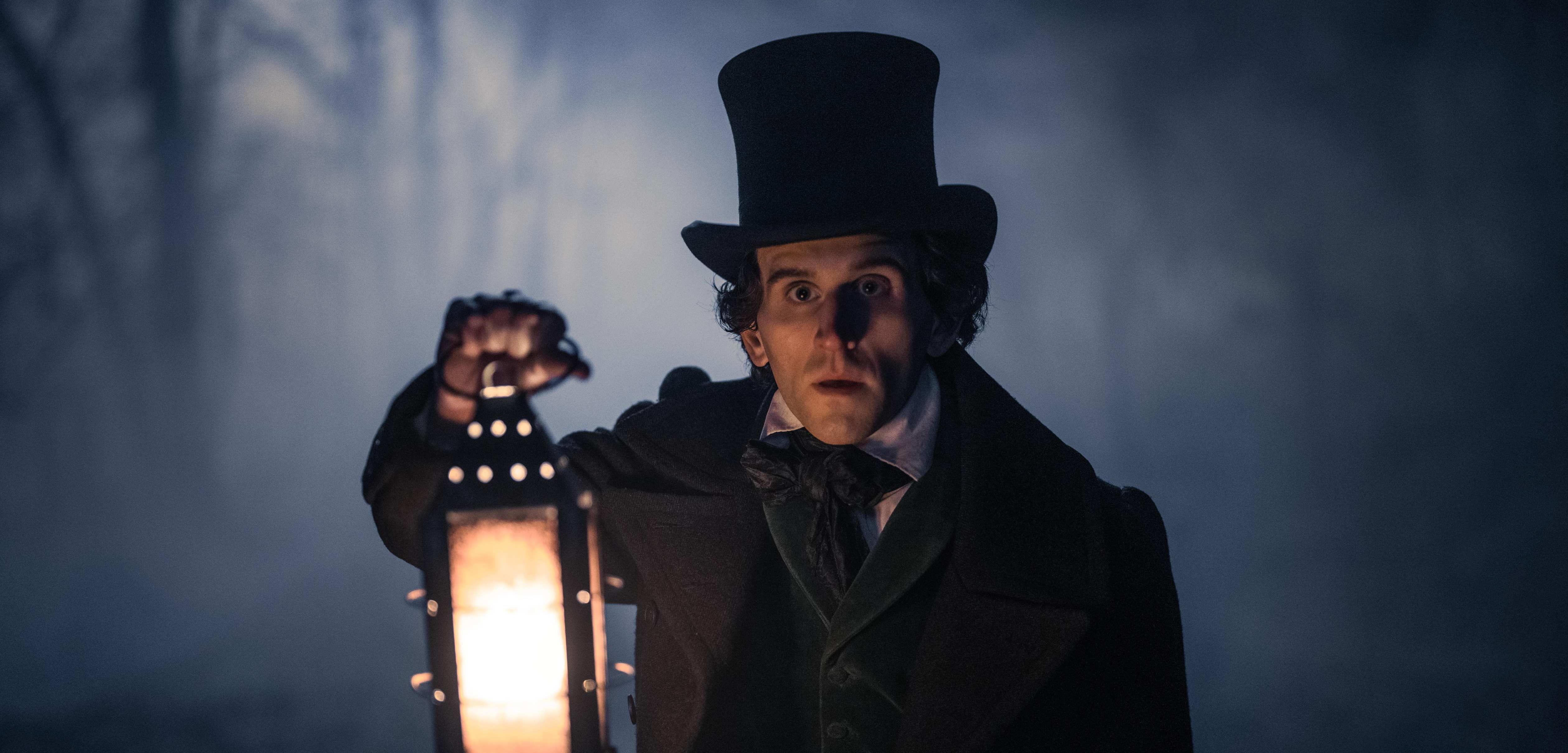Directed by Scott Cooper, Netflix’s murder mystery film ‘The Pale Blue Eye’ revolves around Edgar Allan Poe, a young United States Military Academy cadet and published poet who teams up with Augustus Landor, a retired New York detective, to solve the murders of Leroy Fry and Randolph Ballinger. The period film progresses through Poe and Landor’s investigation as they form a father-son relationship while trying to find the murderer of the former’s fellow cadets. Since Poe is one of the greatest writers of all, the viewers must be wondering how he became a character in the fictional film about revenge. Well, let us share our take on the same! SPOILERS AHEAD.
From Witty Cadet to Master of Macabre: The Transformation of Poe in The Pale Blue Eye
‘The Pale Blue Eye’ is the film adaptation of Louis Bayard’s eponymous novel. Bayard wanted to write a book about the “origin” years of the real-life poet Edgar Allan Poe to trace the formation of the poet the world has been celebrating since. The author was particularly interested in Poe’s brief stay in the United States Military Academy since a military academy is not an ideal place for any writer to become one. Unfortunately, there were no resources available for Bayard to explore the poet’s time at the military academy. “The only records that exist are the court-martial records,” Bayard told Tudum.

Due to the lack of resources, Bayard resorted to fiction for him to write a novel about Poe’s early years as a writer. The novelist wanted a significant fictional character to guide and inspire Poe as a mentor, which led him to create Augustus Landor. “I needed a detective, somebody who could be Poe’s mentor and father figure as they solved this crime together,” Bayard said in the same Tudum interview.
When Scott Cooper decided to adapt the novel to a film, the filmmaker wanted to depict the possible inspirations and influences that shaped Poe as a writer. “Of course, this is a work of fiction,” Cooper told Tudum in the same interview. “What I’m saying is: these events that occur in our film shaped his worldview and helped him become the writer that he became –– with the recurring themes that deal with the questions of death, and the effects of decomposition and reanimation of the dead and mourning –– all those things that are considered part of his dark romanticism,” he added. Bayard and Cooper’s vision to depict Poe’s influences such as occultism and satanism became the foundation of Lea Marquis’ storyline.

In addition, Bayard’s novel and Cooper’s film also succeed in offering an unconventional portrayal of Poe. Since the “Master of the Macabre” is often presented as scary as his works, the filmmaker wanted to offer a portrayal that contradicts the conventional one through his film. “He [Poe] is still seen as someone who trafficked in the dark arts, was obsessed with death, and obsessed with emotions like loss, grief, paranoia, and anxiety. But Edgar Allan Poe, when he was the age he is in The Pale Blue Eye, was warm and witty, and humorous. He had flights of romance and was, obviously, very poetic,” Cooper told A.frame.
Although the character Edgar Allan Poe is not entirely based on the real poet, Bayard and Cooper’s versions of Poe aren’t drastically different from the writer the former military cadet had become. By placing the character among fictional characters and their predicaments, Bayard and Cooper succeeded in exploring a side of Poe unknown to the majority of his admirers.
Read More: Does Christian Bale’s Augustus Landor Die in The Pale Blue Eye?


You must be logged in to post a comment.